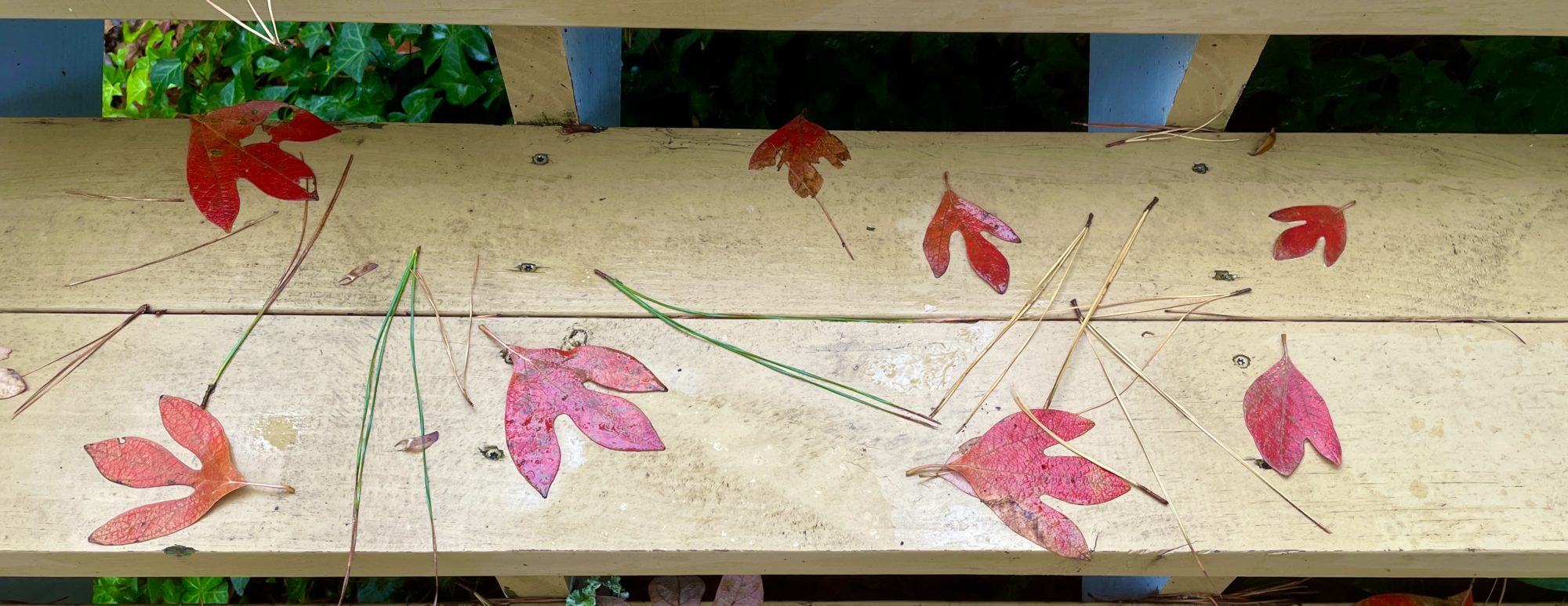
By Mary Reid Barrow
As the remnants of Nicole came through, sassafras leaves on my deck steps created a perfect picture of two special things about this little native tree—its fall color and its mitten-shaped leaves.
Browning remnants of the brightest autumn-red leaves, ever, from the grove of sassafras in my side yard lie all around the yard now.
When the leaves are in full fall color, it’s as if my side yard is on fire! Sassafras is unusual in so many other ways too, from how they grow to what they are known for.

These little understory trees are not the yard trees that most people would choose to plant. They often grow curved, crooked, or slanted as if defying norms set by the tall tree world. In addition, where you have one sassafras. you are apt to have a grove of sassafras before too long.
Sassafras defies the norms by its leaves too. It’s often called the mitten tree because of its three different leaves, somewhat similar to mittens.
One leaf is a mitten with no fingers or thumbs. One is a mitten with a thumb and the last is a mitten with three fingers!

Sassafras roots and leaves have been used for tasty seasonings over the years. In the past, folks made sassafras root tea and for years the root also was the seasoning for root beer.
Today, file powder, an essential seasoning in creole cooking, is still made from dried sassafras leaves. It is a staple in the supermarket seasoning aisle.
Nonhumans dine on tasty sassafras too. The spicebush swallowtail butterfly is named for the spicebush plant, but it also uses the sassafras as a host tree for its hungry caterpillars.
Birds dine on the tiny oval dark blue sassafras berries. Deer and some other mammals browse on the leaves that are said to be lemony tasting.
As for me, when I break a twig of sassafras, I get a scent of fennel. I also love these trees for their twisty shapes, mitten leaves and that oh, so, beautiful fiery red color in fall!
To reach Mary Reid: maryreid@lrnow.org